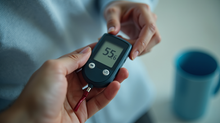Diabetic Gastroparesis
- Maureen Sullivan
- Jun 21, 2021
- 2 min read
Diabetic gastroparesis is defined as the delayed or disordered gastric emptying. Diabetic gastroparesis (DGp) is a component of autonomic neuropathy resulting from long-standing poorly controlled type 1 and type 2 diabetes. Early and consistent glucose control slows the progression and development of diabetic autonomic neuropathy (DAN) and microvascular complications.
Diabetic gastropathy (gastroparesis) is described as a neuropathy occurring in the GI system of diabetic patients. The term describes a clinical condition presenting with upper GI tract symptoms suggestive of an upper motility disturbance (with delayed gastric emptying) in patients with diabetes. Gastroparesis is a relatively common complication of diabetes, but often goes unrecognized.
Gastroparesis affects 20–50% of the diabetic population, especially those with type 1 diabetes mellitus or those with long-standing (≥ 10 years) type 2 diabetes mellitus. It is usually associated with retinopathy, neuropathy and nephropathy (eye, nerve and kidney disease) as well as poor early glycemic control. The mean age of onset is approximately 34 years.
Classic symptoms of gastroparesis may include the following:
· Early satiety
· Postprandial (after meal) fullness
· Bloating
· Abdominal swelling
· Nausea and vomiting, retching
· Wide blood glucose variations/ fluctuations
Complications of untreated diabetic gastroparesis may include the following:
· Esophagitis
· Chronic nausea/vomiting leading to electrolyte disturbance, malnutrition
· Phytobezoar formation (indigestible food, vegetable fiber or seeds)
· Hyperglycemia emergencies including diabetic ketoacidosis and hyperosmolar hyperglycemia syndrome (medical emergencies involving uncontrolled high blood sugar readings)
Diabetic gastroparesis is diagnosed based on symptoms, the exclusion of a mechanical obstruction, physical examination, and radiological studies (endoscopy, ultrasound, MRI or gastric emptying study).
Treatment options for gastroparesis may eventually include enteral feedings, surgical intervention, and both oral and insulin medication adjustments. Of primary importance, though, is the education on dietary and lifestyle interventions to address symptoms:
· Eat small, more frequent meals. Divide portions if necessary.
· Chew the food thoroughly and take 20–30 min to finish the meal
· Identify the high-fiber foods that worsen upper GI symptoms
· Check body weight twice a week, if the weight is decreasing, increase the amount of liquid supplements
· Avoid foods that lower esophageal sphincter pressure: pepper-mint, chocolate, fat, and caffeine
· Avoid caffeine, alcohol, tobacco and stress
· Avoid chewing gum, which increases air swallowing
· Do not lie down immediately after eating.
Surgical intervention for diabetic related gastroparesis may involve the placement of a gastric electrical stimulator. This treatment option sends mild electrical shocks to the stomach muscles to aid in digestion.
Many treatment options exist for gastroparesis, but prevention, followed by early recognition and treatment, affords persons with diabetes the best outcomes.
References




































Comments